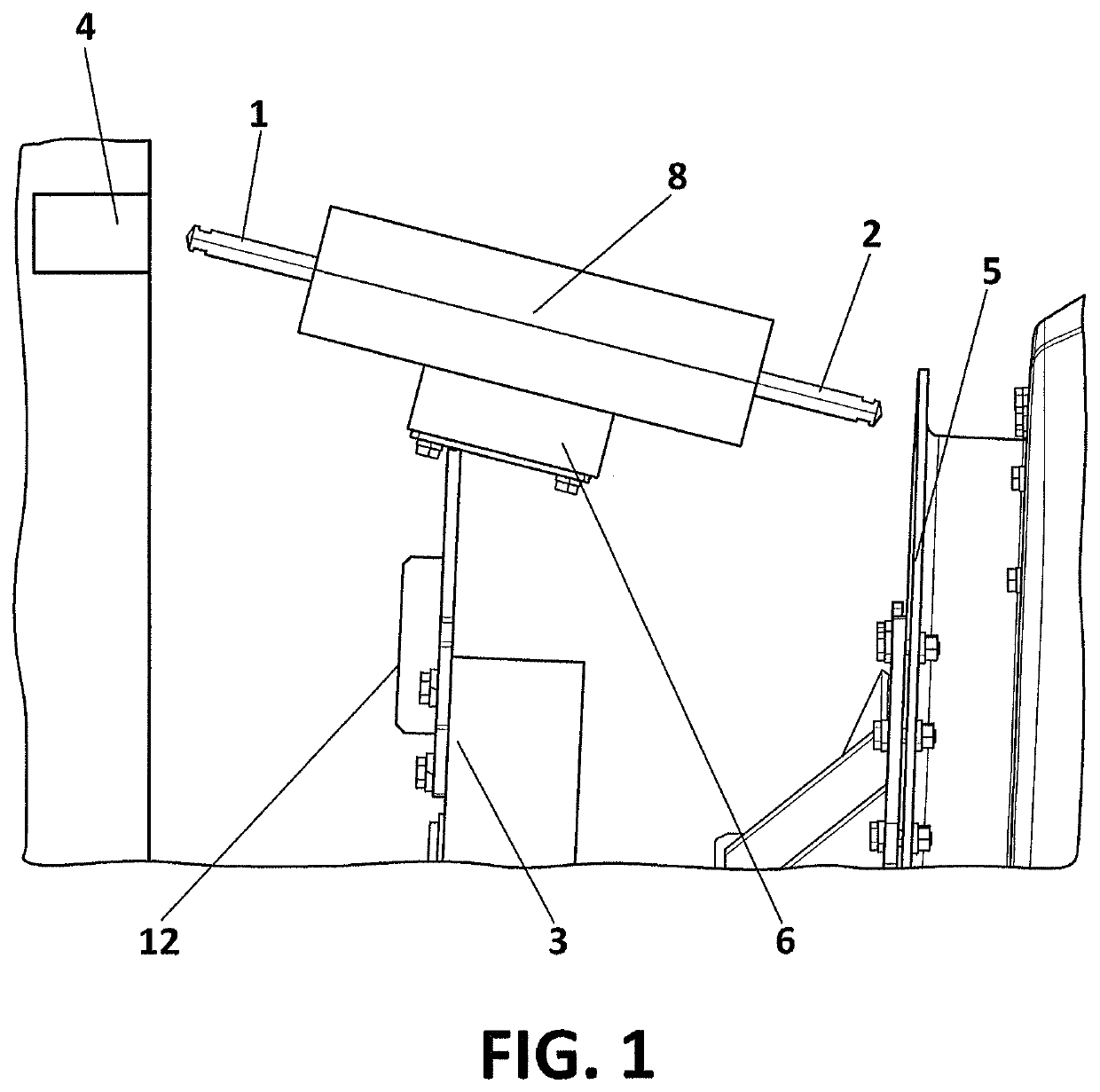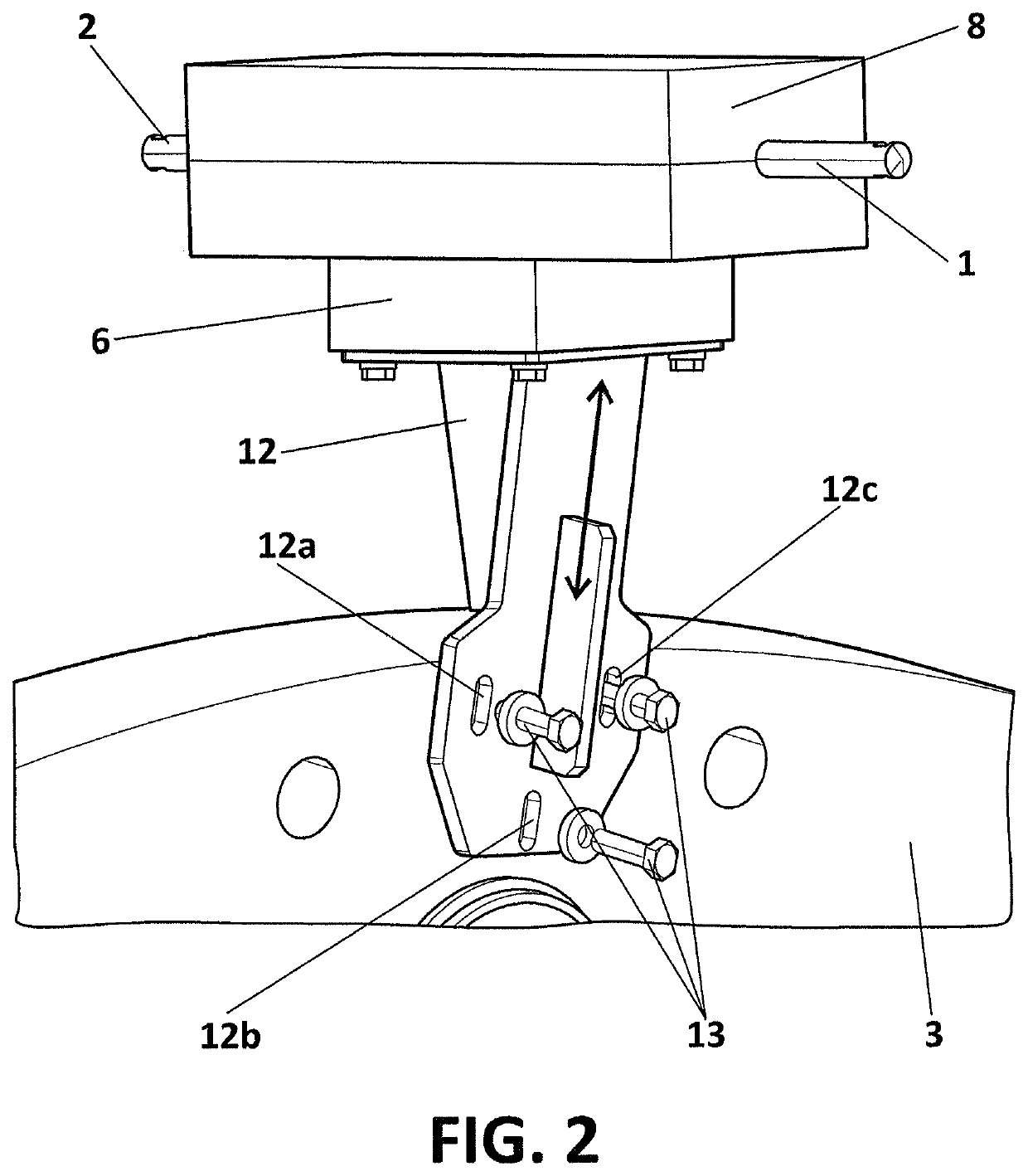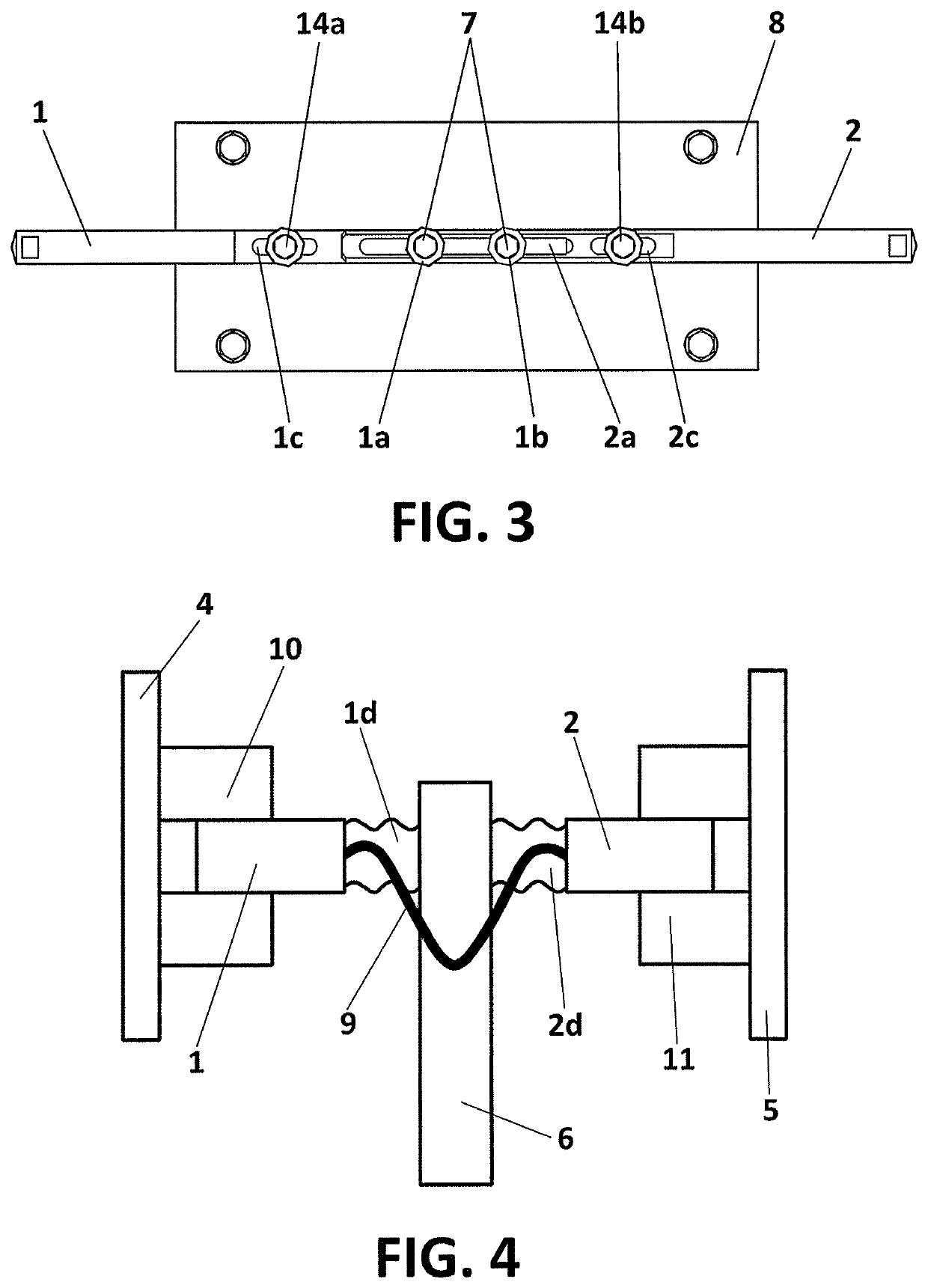Lightning transmission device between the rotor and the nacelle in a wind turbine
a transmission device and wind turbine technology, applied in the direction of mechanical energy handling, machines/engines, mechanical equipment, etc., can solve the problems of affecting the operation of operators, affecting the operation of the wind turbine, and affecting the inner components of the wind turbin
- Summary
- Abstract
- Description
- Claims
- Application Information
AI Technical Summary
Benefits of technology
Problems solved by technology
Method used
Image
Examples
first embodiment
[0021]A) The first embodiment describes the possibility that the relative displacement means between the platens comprise:[0022]An oblong groove belonging to the second platen, and,[0023]at least a hole belonging to the first platen, which is located internally with respect to the projection of the oblong groove of the second platen over the first platen; and wherein at least a fixation is coupled respectively to the groove and the hole, enabling to modify the relative position between the two platens based on the length of said groove.
[0024]It is seen that the oblong groove of the second platen ensures that the distance between the end of the two platens can be modified, which is directly related to the length of the oblong groove, an easy, versatile solution for each type of installation, and a procedure of installation of the lightning transmission device can be described, which comprises the following stages:[0025]a) Positioning the first platen at a given distance from the meta...
second embodiment
[0034]B) The second embodiment describes the possibility that the relative displacement means between the two platens comprise:[0035]A first elastic spring coupled on one side to the first platen and on the other side to the insulator;[0036]A second elastic spring coupled on one side to the second platen, and on the other side to the insulator;[0037]an electrical conductor wire coupled both to the first platen and to the second platen, and[0038]where in each end of each platen closest to the metal strip and to the gutter, respectively, two insulating elements are positioned, configured to contact in this metal strip and the gutter, respectively, thanks to the elastic strength of both elastic springs; and said insulating elements being configured to avoid contact between the ends of the platens and the metal strip and the gutter element, respectively.
[0039]Significant differences are seen with respect to the first alternative of embodiment of the displacement means, as in this case n...
PUM
 Login to View More
Login to View More Abstract
Description
Claims
Application Information
 Login to View More
Login to View More - R&D
- Intellectual Property
- Life Sciences
- Materials
- Tech Scout
- Unparalleled Data Quality
- Higher Quality Content
- 60% Fewer Hallucinations
Browse by: Latest US Patents, China's latest patents, Technical Efficacy Thesaurus, Application Domain, Technology Topic, Popular Technical Reports.
© 2025 PatSnap. All rights reserved.Legal|Privacy policy|Modern Slavery Act Transparency Statement|Sitemap|About US| Contact US: help@patsnap.com



